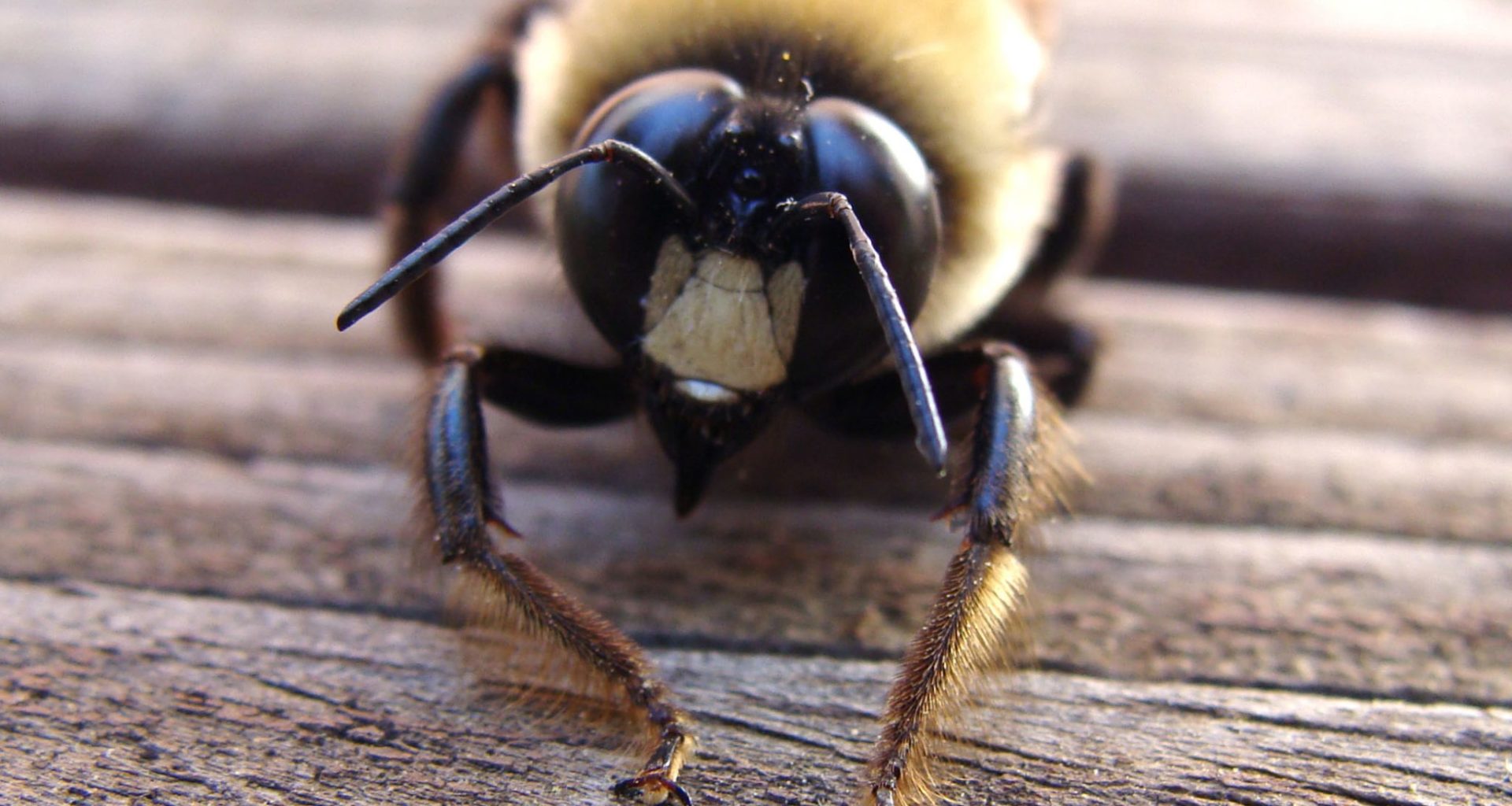Do you notice holes on unfinished or unpainted softwoods that are about half an inch in diameter? Do you see yellowish stains underneath those holes? Are there piles of sawdust just below them? If you answered “yes” to all of these questions, you may be facing a carpenter bee infestation.
Male carpenter bees do not have stingers. Even though female carpenter bees have stingers, they are not really as aggressive as other bees. However, they may choose to sting if provoked, which means they can be a threat most especially for people who tend to have mild or severe allergic reaction to bee stings. No matter the case, it can be downright uncomfortable to have these flying insects in and around the home.
Carpenter bees also tend to create a lot of tunnels to serve as their nests and homes during the winter. Because of this, in time an infestation may cause structural damage that may cost a lot of money to get repaired. Additionally, the feces of male bees guarding the holes they make tend to leave noticeable stains, ruining the appeal of your home.
It’s due to these reasons and more why dealing with a carpenter bee infestation may sound like a really good idea. Before you call up professional exterminators, however, try doing these DIY remedies for carpenter bees first:
- Paint or varnish softwood surfaces. Because carpenter bees choose to make nests on unfinished softwoods, it’s a good idea to cover all softwood surfaces with a sealing primer followed by about a couple of coatings of paint. You may also opt for varnish and stains but they are less effective than paint in warding off carpenter bees.
- Ensure that the paints of all softwood surfaces are in good condition. Give carpenter a bees spots where the paint is already peeling or worn off and they are sure to make tunnels and build a colony. Check all softwood surfaces to ensure that the finishing is intact.
- Fill any crack or small holes with caulk or putty. Carrying out this step is highly recommended before painting softwood surfaces. Any crack, hole or splinter will be a good place for those carpenter bees to start creating their nests.
- Cover all abandoned holes. Carpenter bees emerge in spring as well as fall from their homes. Take the opportunity to fill all empty holes with aluminum foil, steel wool, dowel and glue, caulk or anything you deem suited for the job during these times of the year. Once the abandoned holes are covered, paint on them to keep those flying insects from coming back and reusing their nests.
- Apply insecticide in active holes. Insecticides formulated for flying insects may be used in treating active holes. The best time to apply carbaryl, pyrethrum, boric acid or any similar product is during nighttime when carpenter bees are asleep, or while they’re still hibernating in early spring. Be careful of those female carpenter bees that are likely to suddenly emerge from those holes! The following day, fill those holes and paint over them.
- Use vacuum to suck carpenter bees out of their holes. If you prefer to deal with the infestation without using insecticide, grab your vacuum cleaner. Agitate the holes with a stick and vacuum out those flying insects. The perfect time to do this is early in the evening when carpenter bees are slow-moving and ready to sleep.
- Cover active holes for a quick solution. Another insecticide-free way to kill off those carpenter bees is by simply plugging the opening of their nests with caulk or putty. Carpenter bees won’t be able to make their way out once trapped inside their nests, causing them to eventually die in there due to starvation.
- Opt for hardwoods or non-wood coverings. It’s a good idea to replace damaged softwoods with hardwoods if the carpenter bee infestation doesn’t seem to want to stop in order to deter them from making any more holes or nests. When it comes to trims and sidings, opt for non-wood materials such as aluminum, carbon fiber, vinyl or even cement.
- Spring into action before the nesting activity begins. Preventing an infestation from happening in the first place is a great idea. Start filling up holes and cracks, painting over softwood surfaces and spraying residual insecticides on vulnerable areas in spring time. Perform all of these things to keep those carpenter bees from ruining your home and ultimately your life.












